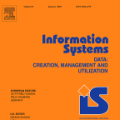Enterprise information systems allow companies to maintain detailed records of their business process executions. These records can be extracted in the form of event logs, which capture the execution of activities across multiple instances of a business process. Event logs may be used to analyze business processes at a fine level of detail using process mining techniques. Among other things, process mining techniques allow us to discover a process model from an event log -- an operation known as automated process discovery. Despite a rich body of research in the field, existing automated process discovery techniques do not fully capture the concurrency inherent in a business process. Specifically, the bulk of these techniques treat two activities A and B as concurrent if sometimes A completes before B and other times B completes before A. Typically though, activities in a business process are executed in a true concurrency setting, meaning that two or more activity executions overlap temporally. This paper addresses this gap by presenting a refined version of an automated process discovery technique, namely Split Miner, that discovers true concurrency relations from event logs containing start and end timestamps for each activity. The proposed technique is also able to differentiate between exclusive and inclusive choices. We evaluate the proposed technique relative to existing baselines using 11 real-life logs drawn from different industries.
翻译:企业信息系统允许公司保存其业务流程执行的详细记录,这些记录可以以事件日志的形式提取,这种记录可以记录在一个业务流程的多种情况下开展活动的执行情况。事件日志可以用来使用过程采矿技术对业务流程进行细细程度的分析。除其他外,过程采矿技术使我们能够从事件日志中发现一个过程模型 -- -- 一种称为自动过程发现的行动。尽管实地有丰富的研究,但现有的自动过程发现技术并不能完全捕捉一个业务流程所固有的同源货币。具体地说,这些技术的大部分将两项活动A和B视为同时进行,有时在B之前完成,有时在B之前完成,有时在B之前完成,有时在B之前完成。通常在A之前完成。但通常,一个业务流程中的活动是在真正的同值货币环境下进行,这意味着两个或两个以上活动执行的时间重叠。本文通过提出一个完善的自动化过程发现技术,即Splet Miner,从含有每项活动开始和结束的时间戳的事件日志中发现真正的货币关系来弥补这一差距。拟议的技术还能够区分独家和包容性选择。我们用不同的历史日志评估了11个行业与现有基线之间的拟议技术。




